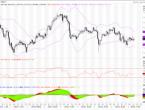EUR/USD
1.16582
0.288%
Gold
4227.33
0.514%
Oil
59.177
1.263%
USD/JPY
155.340
-0.336%
GBP/USD
1.33149
0.778%
GBP/JPY
206.839
0.456%
U.S. crude oil inventories at Cushing, Oklahoma, reported a decrease of 457,000 barrels in the week ending November 28, compared to a decrease of 68,000 barrels in the previous week.December 3 – European Central Bank (ECB) President Christine Lagarde stated that the ECB will not violate EU rules to support loans to Ukraine secured by frozen Russian assets. “I have made it very clear, and my team has stated, that we will do everything in our power, but not in violation of treaties,” Lagarde told European parliamentarians in Brussels on Wednesday. “My appointment as ECB president was not to violate treaties.” Lagarde added, “This is not a refusal; we are simply stating that we must abide by the European treaties governing the ECB’s functions.” “Our second responsibility is to ensure that international law is respected, because this concerns trust in our economic regions and currencies. I deeply hope that we can help Ukraine by providing financing support, but only without circumventing treaty provisions and without violating the primary principle of financial stability.”Ukrainian Prime Minister: (Regarding the EUs proposal on financing Ukraine) This is an important and responsible positive step.On December 3, U.S. Treasury Secretary Bessant said Wednesday that he plans to push for a requirement that the presidents of the 12 regional Federal Reserve Banks must reside in their respective districts for at least three years before being appointed to lead their regional banks. Bessant stated that he will push for the Federal Reserve Board of Governors in Washington to veto any candidates who do not meet this requirement. “The Fed Chair and the Board of Governors have the final say on the selection of regional bank board members…,” Bessant said. “Therefore, I believe… unless someone has resided in their district for at least three years, we will veto them.”The U.S. EIA crude oil inventories, Cushing crude oil inventories, and strategic petroleum reserve inventories for the week ending November 28 will be released in ten minutes.











